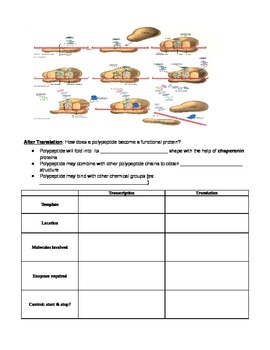

In multicellular organisms, gene regulation drives cellular differentiation and morphogenesis in the embryo, leading to the creation of different cell types that possess different gene expression profiles from the same genome sequence. coli only in the presence of lactose and absence of glucose.
#GENE EXPRESSION TRANSCRIPTION AND TRANSLATION ACTIVATOR#
Although as early as 1951, Barbara McClintock showed interaction between two genetic loci, Activator ( Ac) and Dissociator ( Ds), in the color formation of maize seeds, the first discovery of a gene regulation system is widely considered to be the identification in 1961 of the lac operon, discovered by François Jacob and Jacques Monod, in which some enzymes involved in lactose metabolism are expressed by E. Gene regulation is essential for viruses, prokaryotes and eukaryotes as it increases the versatility and adaptability of an organism by allowing the cell to express protein when needed. Often, one gene regulator controls another, and so on, in a gene regulatory network. Virtually any step of gene expression can be modulated, from transcriptional initiation, to RNA processing, and to the post-translational modification of a protein. Sophisticated programs of gene expression are widely observed in biology, for example to trigger developmental pathways, respond to environmental stimuli, or adapt to new food sources.

Regulation of gene expression, or gene regulation, includes a wide range of mechanisms that are used by cells to increase or decrease the production of specific gene products ( protein or RNA). Diagram showing at which stages in the DNA-mRNA-protein pathway expression can be controlled


 0 kommentar(er)
0 kommentar(er)
